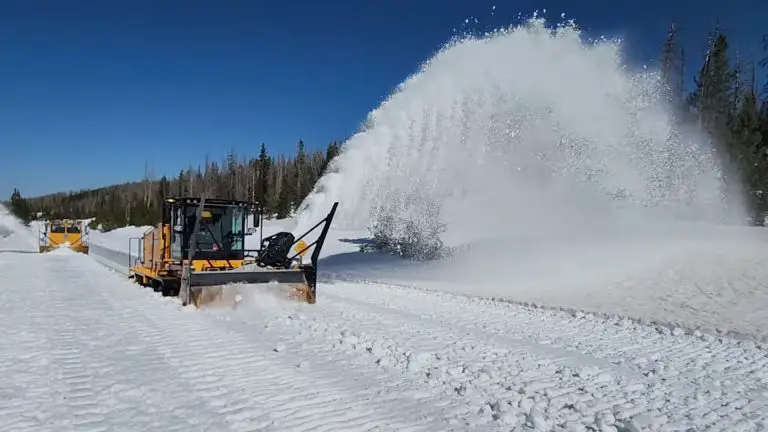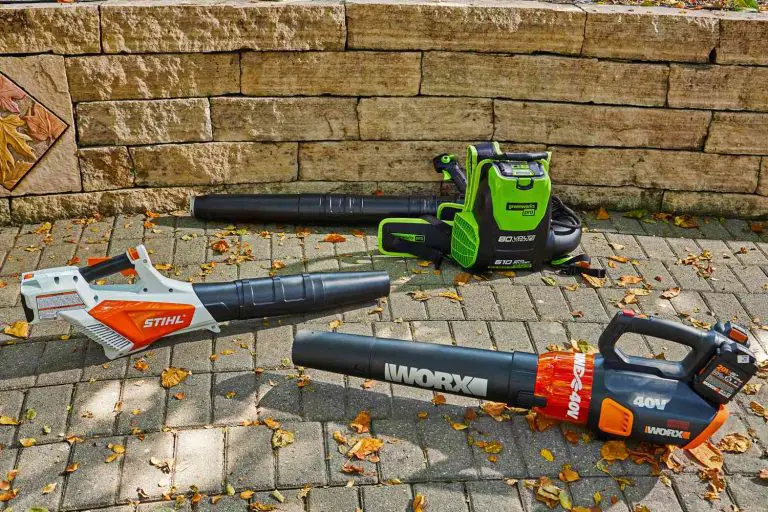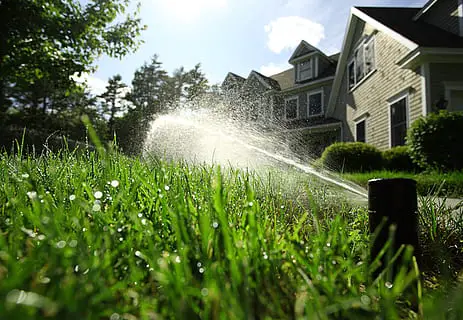To build a berm and divert water in your yard, create a mound of soil that slopes away from the problem area, ensuring proper drainage. Building a berm is an effective solution for excess water, preventing erosion and flooding in your yard.
Excess water can be a significant issue in yards, leading to soil erosion and water accumulation. Building a berm provides a practical way to divert water and prevent these problems. By creating a mound of soil that slopes away from the area, you can direct water flow and encourage proper drainage.
This helps to maintain the integrity of your yard and prevent water-related damage. In this guide, we will explore step-by-step instructions on how to build a berm and effectively divert water, ensuring a well-maintained and functional yard.

Credit: www.reddit.com
Understanding The Purpose And Benefits Of A Berm
A berm is a raised area of soil that is used to redirect the flow of water in your yard. It acts as a barrier or a mini hill, allowing water to be diverted away from problem areas and channeled to where it can be more effectively managed.
Building a berm can offer numerous benefits for your yard and landscaping. Let’s explore the key points of understanding the purpose and benefits of a berm.
Definition And Function Of A Berm
- A berm is a raised embankment created by piling or shaping soil.
- It is typically designed to redirect or slow down the flow of water.
- By altering the natural topography, the berm functions as a barrier to prevent undesired water accumulation in specific areas of your yard.
The Advantages Of Using A Berm For Water Diversion
- Prevents soil erosion: Berms help protect your yard from soil erosion caused by heavy rainfall or runoff by keeping the water on the surface and redirecting it away from vulnerable areas.
- Controls water flow: By diverting water through the creation of berms, you can control where the water goes, preventing flooding or pooling in low-lying areas, such as basements or gardens.
- Reduces water damage: The construction of berms can help reduce the risk of water damage to your home’s foundation and structures. By directing water away from these areas, you can prevent costly repairs and maintain the overall integrity of your property.
- Enhances drainage: Strategic placement of berms can improve the overall drainage of your yard by creating slopes and channels for water to follow. This can help prevent standing water and ensure excess water is carried away efficiently.
How A Berm Can Improve Drainage In Your Yard
- Directs water flow: One of the primary purposes of a berm is to redirect the flow of water, which can help improve the drainage in your yard. By creating berms, you can address areas where water tends to accumulate and redirect it to desired locations such as drainage ditches or away from structures.
- Controls erosion: Berms act as barriers to slow down water movement, reducing erosion of soil and preventing the loss of nutrients within your yard. These raised embankments create a stable platform for water to collect, enabling it to soak into the ground gradually.
- Landscaping benefits: Beyond their functional purposes, berms can also enhance the aesthetic appeal of your yard. By incorporating plants and vegetation onto the berms, you can create visually appealing natural features that blend seamlessly with your landscaping.
Understanding the purpose and benefits of a berm is essential when it comes to effectively managing water flow in your yard. Whether you need to control erosion, redirect water, or improve drainage, building a well-planned berm can provide a viable solution.
Stay tuned for our upcoming blog posts, where we will explore how to design and construct a berm step by step to help you create a more functional and beautiful outdoor space.
Assessing Your Yard’S Water Diversion Needs
Identifying problematic areas in your yard:
- Begin by surveying your yard to identify areas where water tends to accumulate or flow in an undesired direction.
- Look for signs of pooling or erosion, as these are indicative of problematic areas that require attention.
- Keep an eye out for low-lying spots, areas near downspouts, or regions where the soil appears saturated for an extended period.
- Note any areas where the natural slope of your yard may contribute to water runoff concerns.
- Document these problematic areas to help inform your berm-building strategy.
Analyzing soil composition and slope:
- Conduct a soil analysis in the areas of concern to determine the soil’s composition and its ability to absorb or drain water effectively.
- Ensure proper drainage by examining the soil’s texture, such as sand, silt, or clay content, as these factors influence water movement.
- Consider the slope of your yard in problematic areas as it impacts the speed and direction of water flow. A steeper slope may require additional water diversion measures.
- Take note of any compacted or hard-packed soil, which could hinder water absorption and aggravate drainage issues.
- Assess if amendments, such as organic matter or sand, are necessary to improve soil drainage and water retention.
Determining the optimal location for a berm:
- Identify the ideal location for your berm based on its intended purpose, whether it’s directing water away from your home’s foundation, protecting vulnerable landscaping, or preventing erosion.
- Consider the overall landscape layout and how a berm will fit seamlessly into the existing yard design.
- Take into account the natural contour of your yard to determine where a berm will be most effective in redirecting water flow.
- Evaluate any local regulations or ordinances that may impact the placement or height of your berm.
- Plan the berm’s location to ensure it doesn’t block essential water drainage pathways or cause water pooling in new areas.
By thoroughly assessing your yard’s water diversion needs, including identifying problematic areas, analyzing soil composition and slope, and determining the optimal location for a berm, you can effectively address water management concerns. Remember, a well-planned berm can significantly mitigate the negative impact of excessive water in your yard while enhancing its overall drainage system.
Designing And Building An Effective Berm
When it comes to diverting water in your yard, building a berm can be an effective solution. A berm is a raised mound of soil that helps redirect water flow, preventing erosion and water damage. Whether you’re dealing with a soggy lawn or want to protect your garden from excess water, designing and building a well-designed berm is essential.
Follow these guidelines for a successful berm construction project.
Choosing The Right Materials For Your Berm
To ensure the longevity and effectiveness of your berm, selecting the appropriate materials is crucial. Consider the following:
- Soil: Opt for well-draining soil that can withstand water runoff without eroding. Sandy or loamy soil is the ideal choice.
- Grass and vegetation: Use erosion-resistant grass species or plants that can tolerate waterlogged conditions to prevent water from washing away the soil.
- Mulch: Applying mulch to the berm’s surface can help reduce water runoff, retain moisture, and enhance plant growth.
Proper Dimensions And Shape For Optimal Water Diversion
The dimensions and shape of your berm play a significant role in its water-diverting capabilities. Here’s what you need to know:
- Height: The height of the berm should be proportionate to the volume and velocity of the water flow. Generally, a berm height between 1-2 feet is suitable for residential applications.
- Length and width: The length of the berm should extend perpendicular to the water flow, while the width depends on the desired effect and available space in your yard.
- Slope: A gentle slope on the downstream side of the berm promotes proper water drainage and prevents excessive buildup.
Constructing The Berm: Step-By-Step Guide For Success
Follow these steps to construct a berm successfully and ensure its effectiveness in diverting water:
- Planning: Determine the location and purpose of the berm. Identify the water source and consider the grade of your yard to design the most suitable berm.
- Marking: Use stakes and string to outline the shape and dimensions of the berm. Clearly mark the edges to guide you during construction.
- Excavation: Remove the topsoil from the marked area, keeping in mind the desired height and slope. Set aside the excavated soil for later use.
- Compaction: Compact the soil at the base of the berm to ensure stability and prevent erosion. Use a tamper or roller for better compaction.
- Fill and shape: Begin filling the excavated area with the saved soil. Compact the soil layers as you go and shape the berm to your desired specifications.
- Finishing touches: Once the berm is formed, smooth out the surface and make any necessary adjustments. Apply grass seed, plant vegetation, and add mulch to promote stability and enhance aesthetics.
By following these guidelines, you can design and construct an effective berm to divert water in your yard. Remember to choose the right materials, ensure proper dimensions and shape, and follow a step-by-step construction process for optimal results. With a well-built berm in place, you can effectively manage water runoff and protect your yard from potential damage.
Enhancing The Aesthetics Of Your Berm
Building a berm in your yard to divert water can be a practical and effective solution. But why stop at just functionality when you can also enhance its aesthetics? In this section, we’ll explore how you can incorporate plants and vegetation to give your berm a natural and beautiful look.
Incorporating Plants And Vegetation For A Natural Look
To achieve a visually appealing berm, consider the following:
- Choose a variety of plants: Mixing different plant species not only adds visual interest but also promotes biodiversity and ecological balance.
- Consider the size and shape: Utilize plants of different heights, textures, and colors to create a dynamic and harmonious composition.
- Balance evergreens and deciduous plants: Evergreen shrubs and trees can provide year-round greenery, while deciduous plants offer stunning foliage changes throughout the seasons.
- Group plants effectively: Cluster plants together in irregular patterns to mimic natural landscapes and create a more organic appearance.
- Add decorative elements: Incorporate decorative rocks, stones, or ornamental grasses to complement and enhance the overall aesthetic appeal.
Selecting Plant Species That Thrive In Water-Drenched Areas
When it comes to plants for a water-drenched berm, it is essential to choose species that can thrive in these conditions. Consider the following options:
- Sedges and grasses: These plants have evolved to tolerate wet conditions and are excellent choices for waterlogged areas.
- Native wildflowers: Select native wildflowers that are adapted to your region’s specific climate and water conditions.
- Bog-loving shrubs: Species such as buttonbush (cephalanthus occidentalis) and winterberry (ilex verticillata) thrive in moist soil and contribute to the overall diversity of the berm.
Maintaining And Caring For Vegetation On The Berm
To ensure your vegetation flourishes and your berm looks its best, consider the following maintenance tips:
- Watering: While the berm itself helps divert excess water, hydrating the vegetation regularly is still necessary, especially during dry periods.
- Mulching: Apply a layer of organic mulch around plants to retain moisture, suppress weeds, and improve soil fertility.
- Pruning and trimming: Regularly trim and shape plants to maintain their desired size and promote healthy growth.
- Weed control: Keep an eye out for invasive weeds and promptly remove them to prevent them from overpowering your chosen plant species.
- Fertilizing: Some native plants may not require additional fertilization, but for others, utilize a slow-release, organic fertilizer to provide necessary nutrients.
By incorporating plants and vegetation in your berm design and properly maintaining them, you can create a visually stunning focal point in your yard while effectively managing water flow. So, let your creativity flow and turn your berm into a beautiful and functional landscape feature.
Additional Strategies For Water Diversion In Your Yard
Building a berm to divert water in your yard is an effective way to prevent water damage and erosion during heavy rainfall. But did you know that there are additional strategies you can implement to further control water flow in your yard?
In this section, we will explore three key strategies: implementing swales and french drains, installing gutters and downspouts, and using rain barrels for water conservation.
Implementing Swales And French Drains
Swales are shallow ditches designed to redirect water away from certain areas of your yard. They are typically positioned strategically to capture runoff and guide it towards a designated drainage area. By creating a gentle slope or contour, swales effectively channel water away from your home’s foundation or low-lying areas.
On the other hand, french drains are perforated pipes buried underground to collect and redirect water to prevent pooling. These drains are often installed along the base of a berm or at the edge of a property to capture and disperse excess water.
Key points to remember:
- Swales and french drains are effective in redirecting water away from vulnerable areas in your yard.
- Swales should have a gentle slope to facilitate water flow.
- French drains are buried underground and use perforated pipes to collect and redirect water.
Installing Gutters And Downspouts To Direct Water Flow
Gutters and downspouts are essential components of any water diversion system. By collecting rainwater from your roof and directing it away from your home, they prevent water from saturating the ground near your foundation. Installing gutters and downspouts is a straightforward process that can be customized to fit the specific layout of your home.
Ensure that your gutters are free of debris and slope properly towards the downspouts to ensure effective water drainage.
Key points to remember:
- Gutters collect rainwater from your roof and prevent it from causing damage to your foundation.
- Proper installation and maintenance of gutters and downspouts is crucial for optimal water diversion.
- Regularly inspect and clean your gutters to prevent clogs and blockages.
Using Rain Barrels For Water Conservation
Rain barrels offer a dual benefit of water conservation and water diversion. By capturing rainwater that would otherwise flow into storm drains, rain barrels provide a sustainable water source for irrigation purposes. Position the rain barrel near a downspout to collect rainwater, and utilize it to water your plants and garden during dry periods.
This reduces the demand on municipal water supplies and conserves water resources.
Key points to remember:
- Rain barrels capture rainwater for later use, reducing reliance on municipal water for irrigation.
- Position the rain barrel near a downspout to collect rainwater effectively.
- Ensure the rain barrel has a secure lid to prevent mosquito breeding and contamination.
By implementing swales and french drains, installing gutters and downspouts, and using rain barrels, you can further enhance your water diversion strategies. These additional measures not only protect your yard from water damage but also contribute to water conservation efforts.
Experiment with different techniques and find the combination that works best for your specific yard’s needs.
Troubleshooting Common Issues With Berms
Building a berm in your yard can be an effective way to divert water away from areas prone to flooding and prevent soil erosion. However, like any landscape feature, berms may encounter common issues that require troubleshooting to ensure their optimal performance.
Below, we will discuss three common problems associated with berms and offer practical solutions to address them.
Assessing Insufficient Water Diversion
One of the main purposes of a berm is to redirect water flow away from vulnerable areas. If you notice that water is not being adequately diverted or pooling on certain sections of your property, it may indicate an insufficient water diversion issue.
Here’s what you can do:
- Check the overall slope and height of the berm. Make sure it is graded properly to direct water away from the problem area.
- Assess the soil composition and ensure it has proper drainage capabilities. If the soil is sandy or compacted, it may impede water diversion. Consider amending the soil with organic matter to improve its drainage.
- Evaluate the surrounding landscape features. Are there any obstructions, such as rocks or vegetation, hindering water flow? Clearing these obstructions can enhance the berm’s performance.
Dealing With Erosion And Soil Washouts Around The Berm
Due to the force of water runoff, berms can sometimes experience erosion and soil washouts around their edges. To combat these issues and maintain the integrity of your berm, follow these steps:
- Reinforce the berm’s edges with erosion control measures, such as installing rocks or planting vegetation with deep roots. This will help stabilize the soil and prevent washouts.
- Consider incorporating erosion control mats or geotextiles into the construction of the berm. These materials can provide additional support that prevents erosion and strengthens the berm’s structure.
- Regularly inspect the berm for signs of erosion or washouts. If you notice any areas of concern, promptly repair them by backfilling with suitable soil and reinforcing as needed.
Modifying And Adjusting The Berm For Improved Performance
Berms are not one-size-fits-all solutions, and some adjustments may be required to optimize their performance. If you find that your berm is not effectively diverting water or encountering other issues, here are some modifications you can consider:
- Increase the height or width of the berm to enhance its ability to redirect water.
- Evaluate the berm’s shape and contour. Sometimes, modifying the slope or curve can improve its efficiency in diverting water.
- Install drainage pipes or channels within the berm to ensure proper water flow and prevent excessive saturation.
- Consider planting moisture-tolerant vegetation on the berm’s surface. This can help absorb excess water and reduce erosion.
Remember, troubleshooting common issues with berms requires careful observation and proactive measures. By assessing water diversion, addressing erosion and washouts, and modifying the berm’s design, you can ensure the effective and long-lasting performance of this valuable landscape feature.
Conclusion
Building a berm in your yard to divert water is a smart and effective way to manage drainage issues. By following the steps outlined in this guide and considering the various factors involved, you can create a berm that not only addresses your water problem but also enhances the aesthetics of your landscape.
Remember to carefully choose the location, size, and materials for your berm based on the slope of your yard, the amount of water accumulation, and the overall design of your outdoor space. Additionally, regular maintenance and proper grading will ensure the optimal functioning of your berm throughout the year.
By implementing this solution, you can protect your property from water damage, prevent erosion, and create a more functional and beautiful yard. So, don’t wait any longer; start building your berm today and enjoy a well-drained and attractive landscape for years to come.







